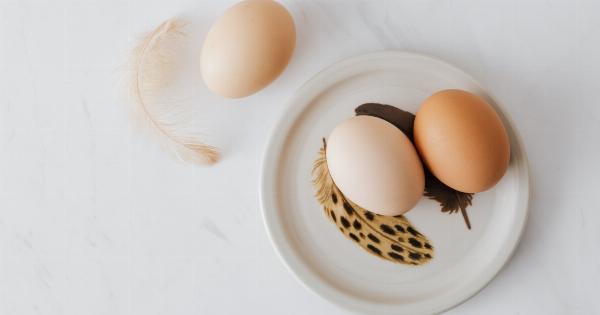High cholesterol is a common health concern that affects millions of people worldwide. It is a condition characterized by an abnormal increase in the levels of cholesterol in the blood.
High cholesterol can lead to various health problems, including heart disease, stroke, and other cardiovascular complications. Fortunately, there are effective ways to tackle high cholesterol, and one dynamic pair that has shown promising results is a combination of a healthy diet and regular exercise.
The Role of Diet in Lowering Cholesterol
A balanced and nutritious diet plays a crucial role in managing high cholesterol levels. By making smart food choices, one can significantly reduce their cholesterol levels and improve overall health.
The key is to focus on foods that are low in saturated and trans fats, as these fats can raise cholesterol levels in the body. Instead, individuals should opt for foods that are rich in fiber and heart-healthy fats.
Include These Foods in Your Diet
1. Oats and Barley: These whole grains are high in soluble fiber, which helps reduce LDL cholesterol, often referred to as “bad” cholesterol.
2. Fatty Fish: Fish rich in omega-3 fatty acids like salmon, mackerel, and trout can lower cholesterol levels and reduce the risk of heart disease.
3. Nuts: Almonds, walnuts, and other nuts are rich in monounsaturated fats, which can help lower LDL cholesterol.
4. Fruits and Vegetables: These are packed with vitamins, minerals, and antioxidants that contribute to heart health. They are also high in fiber, which aids in cholesterol management.
5. Olive Oil: This healthy oil is an excellent source of monounsaturated fats and antioxidants, making it a valuable addition to a cholesterol-lowering diet.
The Power of Exercise for Lowering Cholesterol
In addition to a healthy diet, regular physical activity is equally important in tackling high cholesterol.
Exercise has numerous benefits for cardiovascular health, including increasing levels of high-density lipoprotein (HDL) cholesterol, often referred to as “good” cholesterol. HDL cholesterol helps remove LDL cholesterol from the arteries, reducing the risk of plaque formation and blockages.
Both aerobic exercises and strength training have shown positive effects on cholesterol levels.
Aerobic exercises like jogging, swimming, cycling, and dancing improve blood circulation, increase HDL cholesterol levels, and decrease LDL cholesterol levels. Strength training exercises, on the other hand, help build lean muscle mass, which in turn boosts metabolism and improves overall heart health.
Creating an Exercise Routine
1. Aerobic Exercises: Engage in at least 150 minutes of moderate-intensity aerobic activity every week. This can be broken down into 30 minutes on most days of the week.
2. Strength Training: Incorporate strength training exercises at least two days a week. This can include using free weights, weight machines, or bodyweight exercises like push-ups and squats.
3. Stretching and Flexibility: Don’t forget to include stretching exercises before and after each workout to improve flexibility and reduce the risk of injuries.
The Synergy Between Diet and Exercise
While diet and exercise are effective on their own, the combination of the two can produce even greater results in tackling high cholesterol levels. When combined, a healthy diet and regular exercise have a synergistic effect on cholesterol management.
Regular physical activity enhances the benefits of a cholesterol-lowering diet by increasing the body’s metabolism, promoting weight loss, and improving overall cardiovascular fitness.
Exercise also helps strengthen the heart muscle, reduce inflammation, and improve blood vessel function.
Moreover, a healthy diet provides the necessary nutrients to support physical activity. Foods rich in complex carbohydrates, lean proteins, and healthy fats fuel the body, providing energy for optimal exercise performance.
Other Lifestyle Changes to Lower Cholesterol
Beyond diet and exercise, certain lifestyle changes can contribute to lowering cholesterol levels and improving overall health:.
1. Quitting Smoking: Smoking damages blood vessels, lowers HDL cholesterol, and increases the risk of heart disease. Quitting smoking can significantly improve cholesterol levels and overall cardiovascular health.
2. Limiting Alcohol Intake: Excessive alcohol consumption is associated with high cholesterol levels. It is important to moderate alcohol consumption and limit it to a moderate level.
3. Managing Stress: High stress levels can indirectly affect cholesterol by triggering unhealthy coping mechanisms such as emotional eating or adopting a sedentary lifestyle.
Finding healthy ways to manage stress, such as practicing yoga or meditation, can contribute to better cholesterol control.
Consult a Healthcare Professional
While a healthy diet and regular exercise are generally safe for most people, it is always recommended to consult a healthcare professional before making significant lifestyle changes.
They can provide personalized guidance, considering individual factors such as medical history, current medications, and specific dietary restrictions.
By incorporating a dynamic pair of a healthy diet and regular exercise into daily routines, individuals can effectively tackle high cholesterol levels.
With patience, persistence, and professional guidance, a healthier cholesterol profile and improved overall well-being can be achieved.





























